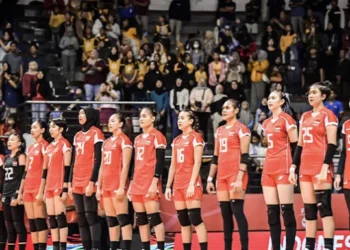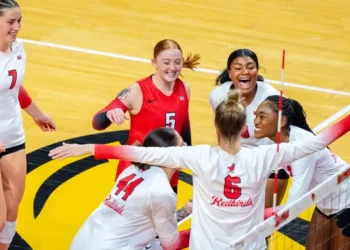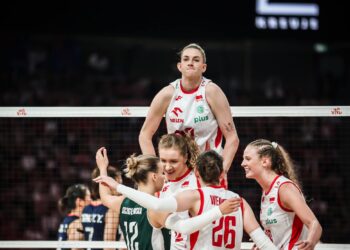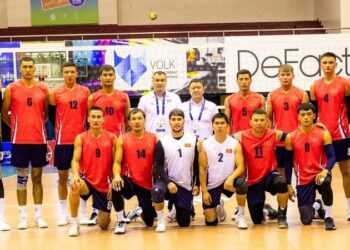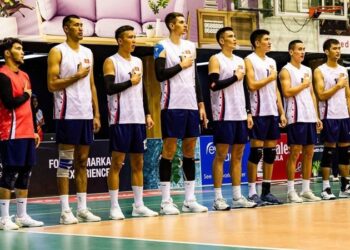In the high-impact world of volleyball, knee injuries can spell disaster for an athlete’s career. The constant jumping, diving, and rapid direction changes place enormous stress on the joints, and a single awkward landing can tear ligaments or damage cartilage in an instant. Yet for many elite players, it’s not the injury that defines them, but the journey back. Such is the case for Emma Riley, a 26-year-old outside hitter whose triumphant return from major knee surgery is inspiring teammates, coaches, and fans alike.
Emma’s story is one that resonates deeply within the volleyball community. Just two years ago, during a crucial league semifinal, she went up for what looked like a routine spike. She landed awkwardly, heard a pop, and crumpled to the floor. The diagnosis: a torn ACL and meniscus damage — injuries that can sideline even the toughest athletes for a year or more. For Emma, who had just broken into her national team’s starting lineup and was eyeing her first appearance at the World Championships, it felt like her world had collapsed.
“The first few days after the injury were the hardest,” Emma recalls. “I couldn’t stop thinking, Why me? Why now? I had finally found my rhythm. I was in the best shape of my life, and suddenly, I couldn’t even walk without crutches.”
Her surgeon was clear: surgery was unavoidable, and the road back would be grueling. An ACL reconstruction is a complex procedure that replaces the torn ligament with a graft, often taken from the patient’s own hamstring or patellar tendon. For an athlete whose game relies so heavily on explosive movements, the stakes are even higher. Emma’s coaches and medical team set realistic expectations — a full recovery would take 9–12 months at best, and even then, there was no guarantee she’d regain her old form.
But giving up was never an option for Emma. Within days of surgery, she was doing gentle range-of-motion exercises. Within weeks, she was spending hours each day with the team’s physiotherapist, relearning how to activate her quad muscles and rebuild basic strength. She credits her medical team and her own stubborn resolve for pushing through the darkest days. “There were moments when the pain and frustration were overwhelming,” she admits. “But I just kept telling myself, One day at a time.”
As the months passed, Emma’s determination turned into steady progress. While her teammates traveled for matches, she stayed behind, often alone in the gym. She swapped spikes for resistance bands and sandbags. Slowly, the exercises became more demanding — walking became jogging, jogging turned into sprints, and small hops evolved into full jump sets. The first time she landed from a practice spike without pain, she burst into tears.
Her comeback wasn’t just physical. Mentally, Emma found a new level of resilience. She began working with a sports psychologist to tackle the fear that often haunts athletes after major injuries. “The mental block is huge,” she says. “You start second-guessing every landing. You don’t trust your body the way you used to. But talking it through, visualizing my movements — that helped me believe again.”
When she finally returned to team practice, nearly 11 months post-surgery, her teammates greeted her with cheers. But Emma knew she wasn’t truly back until she stepped onto the court for a real match. That moment came earlier this year, in front of a packed home crowd. She didn’t just play — she dominated. Her serve reception was rock solid, her spikes found the floor with ruthless precision, and she moved across the court as if the injury had never happened. She finished the match as the team’s top scorer, helping secure a vital win.
Emma’s performance has been nothing short of remarkable. Statistically, she’s playing some of the best volleyball of her career, with higher hitting percentages and more consistent defense than before her injury. Her coach says the time off may have even made her a smarter player. “Emma has always been an explosive athlete, but now she’s added patience and court vision to her game,” he explains. “She’s not just reacting anymore — she’s anticipating.”
Beyond the stats, her comeback has made her a role model. Younger players approach her for advice, and she’s become an unofficial mentor for teammates battling their own injuries. “I want people to know that an injury doesn’t have to be the end,” Emma says. “It can be the start of something better — if you’re willing to do the work.”
Looking ahead, Emma has set her sights on making the national squad for the next Olympic cycle. After what she’s been through, few would bet against her. For now, she’s content to be back on the court, doing what she loves — and proving that sometimes, a setback is just the setup for an ev
en stronger comeback.

